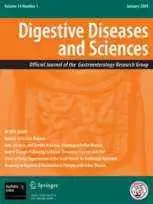Celiac.com 12/06/2007 - About one person or so in every hundred has celiac disease, which means they suffer from a variety of associated symptoms along with intestinal damage and associated conditions. Research shows a connection between celiac disease and a variety of hepatic disorders. People with celiac disease have a higher instance of certain disorders of the liver. One of the most commonly presented liver problems among celiac patients is isolated hypertransaminasemia with non-specific histologic changes.
Following a gluten-free diet usually returns the liver enzymes and histologic function to their normal state. People with celiac disease can also have unrelated liver conditions, such as primary biliary cirrhosis, autoimmune hepatitis, or primary sclerosing cholangitis.
Celiac.com Sponsor (A12):
Most people don’t know much, if anything about celiac disease. Even most people with celiac disease or gluten intolerance face a long learning curve to get up to speed on all of the related issues that concern them. Many people with celiac disease understand that it is a condition in which an auto-immune mediated reaction to the presence of gluten from wheat, rye or barley cause damage to the lining of the intestine, which, if left untreated exposes them to greater risks of certain types of cancer, along with diabetes, and many other conditions.
Even though it is well known among physicians that celiac disease is associated with a variety of other conditions, until recently, those associated with malabsorption were the best documented. Most doctors and researchers believed that these associated conditions were the direct result of, or closely associated with the malabsorption and a compromised nutrient uptake facing untreated celiac patients.
Recently, however, evidence has begun to emerge that shows celiac disease to be a multi-system disorder that might affect a wide array of organs, including the bones, the heart, the skin, the liver, and the nervous system. Evidence is emerging that shows that beyond damaging the liver outright, celiac disease might also compound the impact of chronic liver diseases when the two occur together.
To better understand the relationship between celiac disease and various liver disorders, researchers Alberto Rubio-Tapia and Joseph A. Murray conducted a review aimed at exploring the spectrum and pathogenesis of liver maladies associated with celiac disease, and to better describe the connection between celiac disease and those liver maladies to better establish a baseline for diagnosis and therapy to help those with chronic liver ailments and to better diagnose and treat celiac disease.
Study Method
In June 2007, the researchers searched PubMed for English-language journals that included full-length articles with the following keywords: celiac disease, sprue, liver disorders, liver involvement, liver tests, hepatitis, cholangitis, and cirrhosis. The researchers looked at 259 cases of patients with chronic hepatitis C, and found that they were three times more likely than a control group of normal volunteers to have celiac disease. The rate was 1.2% versus .4% for the control group.
A second study showed a prevalence of celiac in 534 patients with chronic hepatitis to be 1.3%. Lastly, people with celiac disease show a high rate of non-response to hepatitis B vaccine. Non-response rates were 54% in children with celiac disease and 68% in adult celiacs.
Hemochromatosis
Celiac’s connection to hemochromatosis is twofold. Case histories show that iron overload and diagnosis of hereditary hemochromatosis often follows successful celiac treatment. Also, British patients with celiac disease showed a greater occurrence of mutation in the gene (HFE) controlling hemochromatosis, which might indicate that enhanced iron production is an adaptation to the reduced nutrient absorption associated with celiac. However, a study of Italian celiac patients showed no such increase in mutations. Researchers suspect that any relationship might be coincidental, as both conditions affect large numbers of Caucasians.
Nonalcoholic Fatty Liver Disease
About 10% to 25% of the general population will develop nonalcoholic fatty liver disease. Nearly 1 in 3 Americans diagnosed with celiac disease is overweight or obese. Two different studies have shown the number of biopsy-confirmed celiac disease in about 3.5%, or over three times that of the normal population.
Liver Transplant
Of 185 patients who underwent transplant, 4.3%, over 4 times the normal population, were positive for celiac disease. In nearly all cases, the cause of the end-stage liver disease requiring transplantation was autoimmune.
Gluten Withdrawal
In patients with nonalcoholic fatty liver disease, a gluten-free diet coincided with a normalization of liver blood test abnormalities, but the exact effects of a gluten-free diet on liver abnormalities in non-alcoholic fatty liver disease and other liver disorders needs to be clarified through further study.
Conclusions
A gluten-free diet is an effective medical therapy for most patients with celiac disease and liver disorders. The effect of a gluten-free diet on the progression of liver diseases associated with celiac disease is less clear. Clearly more studies need to be conducted to further elucidate the relationship between celiac disease and various disorders of the liver.
HEPATOLOGY 2007; 46:1650-1658.






Recommended Comments